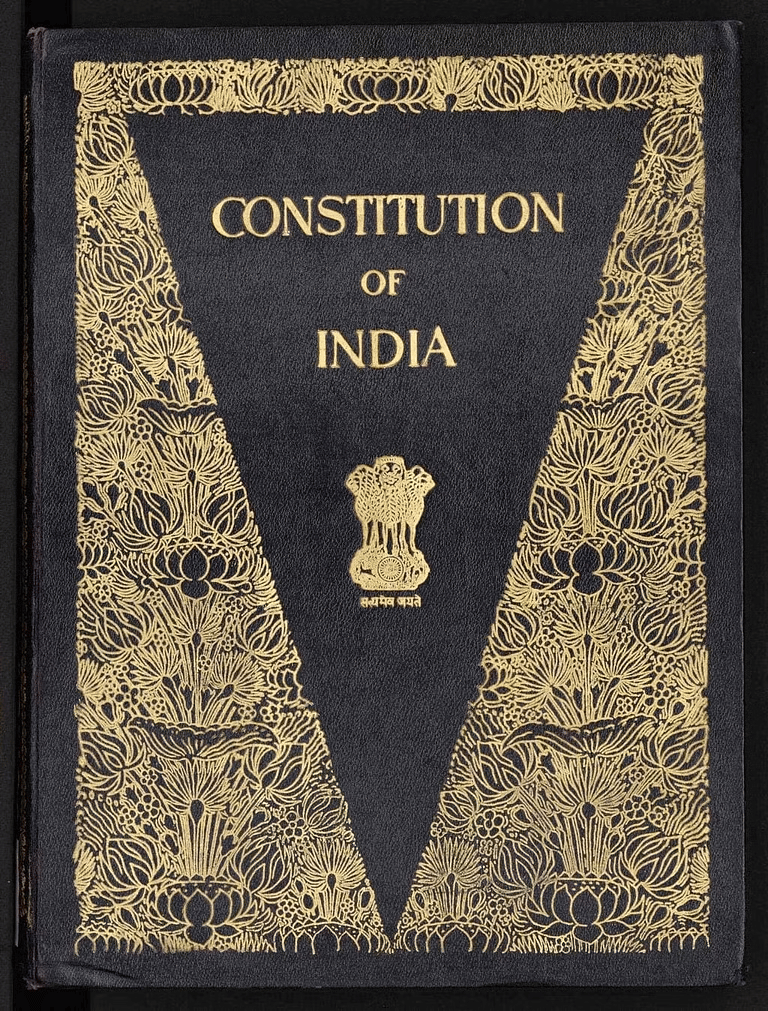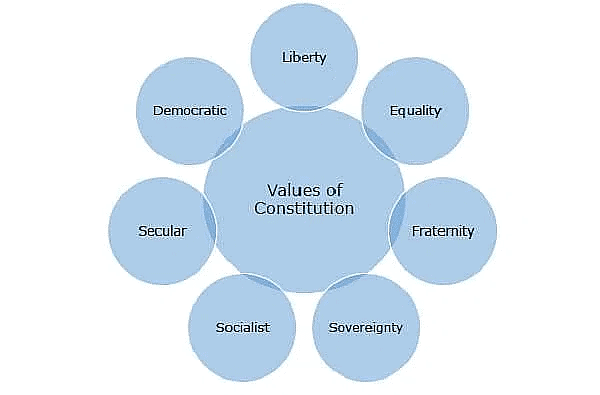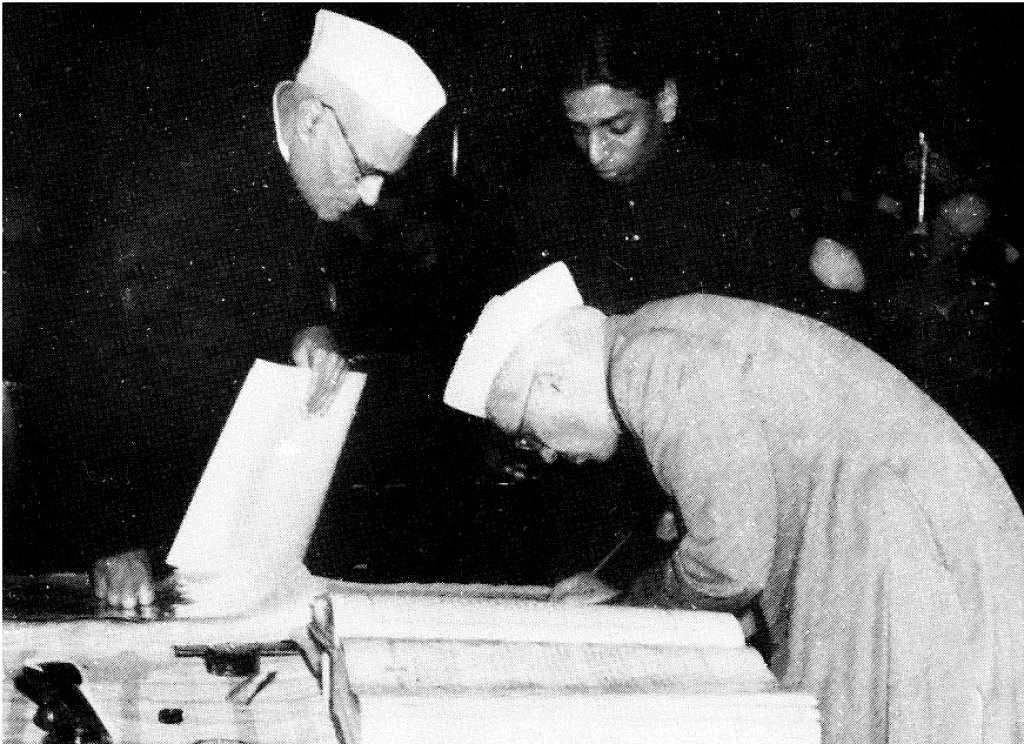NCERT Solutions for Class 11 Political Science - Constitution: Why and How?
Q1: Which of these is not a function of the constitution?
(a) It gives a guarantee of the rights of the citizen.
(b) It marks out different spheres of power for different branches of government.
(c) It ensures that good people come to power.
(d) It gives expression to some shared values.
Ans. (c)
It ensures that good people come to power is not the function of the Constitution. The Constitution is responsible for the framework of distribution of power and not for the personal integrity of the people who occupy the positions of power.

Q2: Which of the following is a good reason to conclude that the authority of the constitution is higher than that of the parliament?
(a) The constitution was framed before the parliament came into being.
(b) The constitution-makers were more eminent leaders than the members of the parliament.
(c) The constitution specifies how parliament is to be formed and what are its powers.
(d) The constitution cannot be amended by the parliament.
Ans. (c)
The constitution specifies how parliament is to be formed and what are its powers. Thus, it is the source of authority for the parliament.
Q3: State whether the following statements about a constitution are True or False.
(a) Constitutions are written documents about formation and power of the government.
(b) Constitutions exist and are required only in democratic countries.
(c) Constitution is a legal document that does not deal with ideals and values.
(d) A constitution gives its citizens a new identity.
Ans.
(a) False
The statement is False as Constitutions are a written document but is not just about the formation and power of the government. The Constitution lays down the framework that demarcates fundamental political code, structure, procedures, powers, and duties of government institutions and sets out fundamental rights, directive principles, and the duties of citizens as well.
(b) False
The statement is False as Constitution is a set of rules and regulations designed for the administration and management of an organization or a country. Not only Democratic countries need these sets of rules and regulations but every nation, whether democratic or not require these sets of rules and regulations to function in a proper way.
(c) False
The statement is False as Constitution is a legal document that deals with many ideals and values like directive principles, fundamental duties & more.
(d) True
The statement is True as the constitution provides citizens of a country a new identity.
Q4: State whether the following inferences about the making of the Indian Constitution are Correct or Incorrect. Give reasons to support your answer.
(a) The Constituent Assembly did not represent the Indian people since it was not elected by all citizens.
(b) Constitution-making did not involve any major decision since there was a general consensus among the leaders at that time about its basic framework.
(c) There was little originality in the Constitution, for much of it was borrowed from other countries.
Ans.
(a) Incorrect: It is incorrect to say that Constituent Assembly did not represent the Indian people because:
- Although the members of the Constituent Assembly were not elected by Universal suffrage, there was a serious attempt to make the Assembly a representative body.
- The Constituent Assembly represented the members of all religions, social and economic groups to accommodate all shades of opinion within it.
- The Assembly had 26 members even from scheduled castes.
 Members of the Constituent Assembly
Members of the Constituent Assembly
(b) Correct: It is correct to say so, because:
- An objective resolution containing principles was moved by Nehru in 1946 brought by the nationalist movement.
- Constituent assembly couldn’t have functioned without any background consensus on main principles.
- Our constitution does not have only rules and procedures but a moral commitment also to establish a government to fulfill the promises made to people.
(c) Incorrect: It is incorrect to say because:
- Though they borrowed a number of provisions from constitutions of different countries but it was not based on slavish imitations.
- Each provision before it was included, was well considered by the members of the Constituent Assembly.
- Long debates and discussions also took place to examine the suitability to the conditions prevailing in India along with the problems and aspirations of the people.
Q5: Give two examples each to support the following conclusions about the Indian Constitution:
(a) The Constitution was made by credible leaders who commanded peoples' respect.
(b) The Constitution has distributed power in such a way as to make it difficult to subvert it.
(c) The Constitution is the locus of people's hopes and aspirations.
Ans.
(a) The Constitution was made by credible leaders who commanded peoples' respect. The following two factors are responsible:
- The members of the Constituent Assembly were elected by indirect election by the members of Provincial Legislative Assemblies. Assembly reflected each of the communities, provinces, princely states through an appropriate formula. 28 members belonged to scheduled castes.
- Members of the Constituent Assembly went through long debates and discussions for 166 days spread over two years eleven months. The Provinces and the Princely States were allotted seats in proportion to their population, approximately in the ratio of 1:10,00,000. Members of the Constituent Assembly like Nehru, Patel, Rajendra Prasad, and Ambedkar were also a part of the national movement and enjoyed credibility among the masses.

(b) The Constitution has distributed power in such a way as to make it difficult to subvert it. The following two factors are responsible:
- The Constitution has horizontally distributed power among different institutions of judiciary, legislature, and executive and statutory bodies like the election commission. If one institution tries to exploit it, other institutions check it.
- The Constitution strikes a balance between the possibility of change and the limits placed upon the nature of changes (amendments) that can be made. Thus, it is neither too rigid nor too flexible and survives as a living document that has the respect of the people. The procedure for amendments is well elaborated for different articles of the constitution.
(c) The Constitution is the locus of people's hopes and aspirations. The following two factors are responsible:
- The constitution has provided some fundamental rights along with protected provisions, the judiciary has powers to protect them.
- The Constitution of India has incorporated some ‘Directive Principles of State Policy’ which are not justiciable but a moral duty of government. The government has also given some effects to these in form of fixed minimum wages, formation of Panchayati Raj Institutions, Employment Guarantee Scheme and mid-day meal schemes, etc. to be the hopes and aspirations of the people.
Q6: Why is it necessary for a country to have a clear demarcation of powers and responsibilities in the constitution? What would happen in the absence of such a demarcation?
Ans. It is necessary for a country to have a clear demarcation of powers and responsibilities in the constitution because:-
- To ensure that no single institution acquires a monopoly of power.
- In case of transgressions, it may be checked by one of the institutions.
- To specify who plays an important role in decision-making powers.
- It shows how the government would be constituted.
- It lays down some limits on the government and citizens both of which are fundamental in nature which should not be trespassed by the government and citizens.
- The Constitution shows how organs of government are interrelated along with a demarcation of powers of institutions like the legislature, executive, and judiciary as well as statutory bodies like the Election Commission of India, etc.
- The judiciary has been given a specific place to declare any law unconstitutional if not at par with the provisions of the Constitution.
In the absence of such a demarcation:
- The federal setup would get strained and there would be a crisis in the center as well as states.
- There would be a problem for the citizens and laws will be proved to be unjust and unfair.
Q7: Why is it necessary for a constitution to place limitations on the rulers? Can there be a constitution that gives no power at all to the citizens?
Ans. It is necessary for a constitution to place limitations on the rulers:
- These units are fundamental in the sense that the rulers may not trespass them.
- Citizens have been specified certain fundamental rights in Constitution to limit the powers of rulers.
- Citizens have been granted some basic rights of liberties also, right to freedom of speech and expression, the freedom to form trade unions and associations, etc. which cannot be checked by the government.
- Only during the national emergency or in the national interest, these rights may be withdrawn during some specific periods.
- It is necessary for a constitution to place limitations on the rulers otherwise they may turn to be a dictator and may overlook the people’s interest constitution guards and controls the rulers.
No, there can be no constitution that gives no power to its people:
- In a Constitutional monarchy, the monarch decides the powers of the people.
- In a dictatorship, the ruler is supposed to get the support of people to cling to power, i.e. Pakistan’s General Musharraf also conducted a periodic referendum to hold power.
- In a democratic institution/Constitution; the people are the real source of power where the public mandate is required to enact the policies for rulers.
- There can’t be a Constitution that gives no power at all to the citizens. It is always for the welfare of the citizens of the country.
Q8: The Japanese Constitution was made when the US occupation army was still in control of Japan after its defeat in the Second World War. The Japanese constitution could not have had any provision that the US government did not like. Do you see any problem in this way of making the constitution? In which way was the Indian experience different from this?
Ans. The Japanese Constitution could not have had any provision that the US government did not like, after the defeat of Japan in the Second World War (1939-1945), due to fact that the Constitution seeks to perform the functions and look after the interest of the rulers or authorities in the country who has occupied it. But, in a democratic country, a constitution expresses the fundamental identity of people as in India.
Indian experience was different from the experience of Japan in the following manner:
- The Indian Constitution was framed by the Constituent Assembly which was elected to aspire India to be a society free of any sort of discrimination among people.
- The framers of the Indian Constitution worked for leading a life of social dignity and social respect along with minimum material well-being and education to an individual.
- Indian Constitution enabled the government to fulfill the aspirations of society, to make it better.
- Indian Constitution has inculcated the federal spirit with the distribution of powers between the different levels of government as well as bicameral legislatures and independent judiciary have also been set up.
- The Constituent Assembly framed Constitution after long debates and discussions to provide political, social, and legal equalities to the people.
 Making of the Indian Constitution
Making of the Indian Constitution
Q9: Rajat asked his teacher this question: “The constitution is a fifty-year-old and therefore outdated book. No one took my consent for implementing it. It is written in such tough language that I cannot understand it. Tell me why should I obey this document?” If you were the teacher, how would you answer Rajat?
Ans. Had I been the teacher I would answer Rajat:
- Indian Constitution is a blend of flexibility and rigidity. Hence, despite being fifty years old, it is not outdated as it has been amended a number of times whenever required to be modified from time to time.
- The Constitution was framed by the Constituent Assembly of elected representatives from every section of society.
- Though Constituent Assembly was dominated by Congress which occupied 82% of the seats in the Assembly, it has representation from every class, religion, and community, region to accommodate all shades of opinion within it.
- Though it is not possible to consult each and every individual in the framing of the Constitution, hence, the provisions were made to elect representatives from every section to reflect the people from all these.
Q10: In a discussion on the experience of the working of our Constitution, three speakers took three different positions:
(a) Harbans: The Indian Constitution has succeeded in giving us a framework of democratic government.
(b) Neha: The Constitution made solemn promises of ensuring liberty, equality, and fraternity. Since this has not happened, the Constitution has failed.
(c) Nazima: The Constitution has not failed us. We have failed the Constitution.
Do you agree with any of these positions? If yes, why? If not, what is your own position?
Ans. In the above-mentioned conversation of three people focused on whether the working of our Constitution is fruitful or not:
(a)
- Indian Constitution is a document consisting of the supreme and fundamental laws of the country about powers, functions, and structures of the government.
- Constitution also shows that how the organs of government are interrelated with each other as well as the relationship between the government and its citizens.
- In the Preamble of the Constitution, India has been declared a Sovereign, Socialist, Secular, Democratic Republic to provide social, economic, and political justice to all the citizens along with the introduction of a universal adult franchise also. But in practice, Indian democracy is suffering from various social and economic evils which have proved a curse.
(b)
- Equality and freedom of citizens are disturbed on the basis of some unconstitutional activities.
- Though the provisions for free and fair elections have been made even then money and muscle power is prevailing everywhere.
- Sometimes political leaders are found to belong to criminal background and some play the politics of vote bank.
- The judiciary has to interfere in the functioning of executive and legislatures,
- Various problems are still being faced by the country, i.e. terrorism, Naxalism, communal riots, etc.
- Hence, we agree with the position of Neha that the goals which were supposed to be achieved through the Constitution, have not still been achieved due to the above-mentioned facts, so we can say that the Constitution has failed to fulfill the needs of the individuals.
(c)
- We have failed the Constitution because we have not applied our sincere efforts towards citizens’ welfare properly.
- Corruption has taken place in the public and private sector both, this is not only due to representatives but the citizens are not vigilant and dutiful also.
- The citizens are also supposed to be active in public affairs and to support other citizens in the exercise of the rights and discharge of obligations.
- The citizens should get themselves educated to curb social and economic inequality to implement the Constitution. Hence, it can be concluded that Constitution has not failed us but we have failed the Constitution due to our negligence towards our rights and duties.
|
151 videos|780 docs|202 tests
|
FAQs on NCERT Solutions for Class 11 Political Science - Constitution: Why and How?
| 1. Why is the Constitution important? |  |
| 2. How was the Indian Constitution formed? |  |
| 3. What is the significance of the Preamble in the Constitution? |  |
| 4. Can the Constitution be amended? |  |
| 5. How does the Constitution protect the rights of citizens? |  |






















